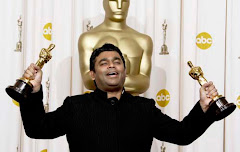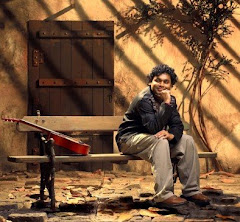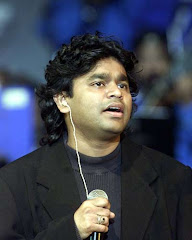DESARAJU SURYA
Hyderabad: The judgment delivered by Justice L Narasimha Reddy of the Andhra Pradesh High Court, asking the Government of India to publicise the contents of Chapter-VIII in the Justice Srikrishna Committee report, gave a first glimpse of what the chapter actually contained.
Contents of Chapter-VIII were submitted by the five-member Committee in the form of a “secret” note to the Union Home Ministry and so far been held back. The Union Home Ministry, however, submitted the Chapter-VIII in a sealed cover to the High Court based on its earlier order while hearing the writ petition filed by former MP M Narayan Reddy.
As per the High Court judgment, the Committee has mentioned in its note that “if the state of Telangana is formed, as suggested in the V option, it would become an epicenter for Maoist violence, and communal violence. The Committee, in its note, suspected both the religious communities of being desperate and outreaching each other.
Some salient points made by the Committee in its note are:
About Muslims, it said, “…There is a certain sense of mutual suspicion between two communities who are living in the above mentioned areas (parts of Telangana). If communal passions become an additional factor in an atmosphere where unemployment, social unrest, etc. exist, it may give rise to birth of militant, Jihadi elements…”
As regards Hindus, it said, “…Telangana has large number of Muslim pockets and to counter Muslim influence, Hindu fundamentalists may compete with them and try to polarize the Hindu population…” Fissures on caste lines were also projected.
The Committee’s note suggests that Maoists will extend their activities to various districts of Telangana; spread Maoist violence, and that Maoists are trying to make a combat through Telangana region.
In the event of the demand of a separate Telangana state not being realized, some of the militant elements which have been in the forefront of the agitations may go underground to revive the Maoist movement in certain pockets of Telangana which, however, could possibly be tackled within a small timeframe with firm political will and strong administrative action. The Maoists who are active in Dandakaranya and Andhra-Orissa Border areas like Khammam, East Godavari, Vizag, etc., and certain forest areas of Adilabad, Karimnagar and Warangal may continue to operate along the borders with Madhya Pradesh, Chattisgarh, Maharashtra and Orissa. Their activities might be more intense in Vizag and Khammam regions but the fall out of violence may mostly be confined to these few districts.
As the State has, by and large, been able to neutralize most of the Jihadi elements in the last two decades and has evolved suitable mechanisms to contain communal and factional resistance, there may not be much change on the position on these two fronts. The status quo may remain. Since the alignment of political forces on communal lines is likely to be less probable, the outbreak of communal violence would be contingent upon extraneous factors”.
More than the contents of the note, a larger question arises, the Judge observed. “Existence of peace and tranquility is always a thing, which everyone can wish and relish. In a society, where several conflicts of interests and ideologies exist, it is but natural that dissents and dissentions are expressed. Some times, they are expressed in the legislative bodies, and on other occasions, outside them. Intensity thereof would depend upon the genuineness of the cause, on the one hand, and the response of the State or the lack of it, on the other hand. The best course to put an end to such agitations is, to engage the persons in meaningful discussion, accede to their demands, if they are genuine, or to explain them as to how their demand is not genuine, or not capable of being accepted, even if genuine. Use of forces can be justified only when the agitators resort to it first,” Justice Narasimha Reddy noted.
This judgment, however, shall not be construed as expressing opinion on any of the alternatives suggested by the Committee, or as limiting the power of the Government to take a decision on the issue concerned, he added.
Referring to Option No.3 of the Committee about merger of Rayalaseema with Telanganam, the Judge pointed out that while almost a rosy picture was painted about it in the main report, even while expressing the view that no political party may agree for that course, the Committee in its note presented a divergent view.
“Since the BJP has a strong presence, it may try to consolidate in Telangana area and further extend its base. AIMIM (Majlis) may try to expand in Rayalaseema regions resulting in birth of militant communalism in certain pockets,” the Committee said in its note.
“One can easily find the difference of approach of the committee, as reflected in the report, on the one hand, and the note, on the other hand,” the Judge commented.
After a great deal of study, an in-depth pondering over, and after weighing the factors, such as propriety, this Court opines not as matter of choice, that the objective in preparing a separate note and delivering it to the respondent (Home Ministry) was more an effort to persuade the Union of India to desist from showing any inclination towards Option No.5, that is formation of Telangana State. In a way, it can be said that, whatever positive was said in support of option No.5, was just neutralized, through the note, even at the cost of several contradictions,” the Judge observed in his verdict.
It appears that the committee hesitated to state in its report, what is exactly intended to, particularly about its disinclination to recommend the formation of a separate State of Telangana, though it has the right or to express any view of its choice, he added.
“For the limited purpose of forming an opinion, as to whether Chapter-VIII deals with any aspects of security of state or any sensitive issues warranting non-disclosure, this Court perused the report carefully and with utmost caution. However, the note which was handed over to the Union of India in a sealed cover, was directed to be kept as secret by the committee itself. This is evident from the fact that, on every page of it, the word “secret” was written. Therefore, it is not the case, where the decision to keep the note secret, is taken by the Government, on its own accord. The Committee discussed the issue of communal violence in its secret note. The subject is certainly a sensitive issue,” the Judge said.






